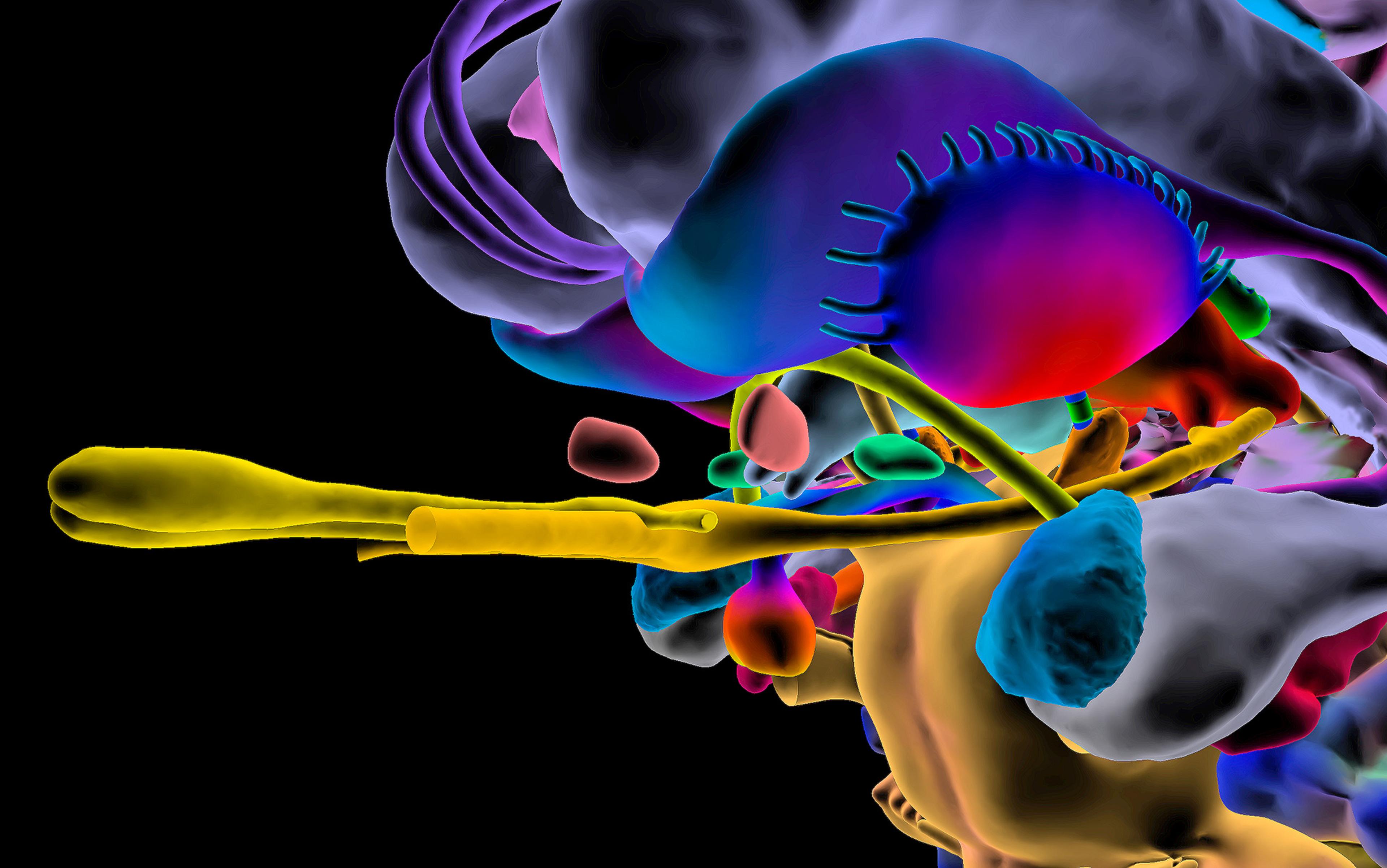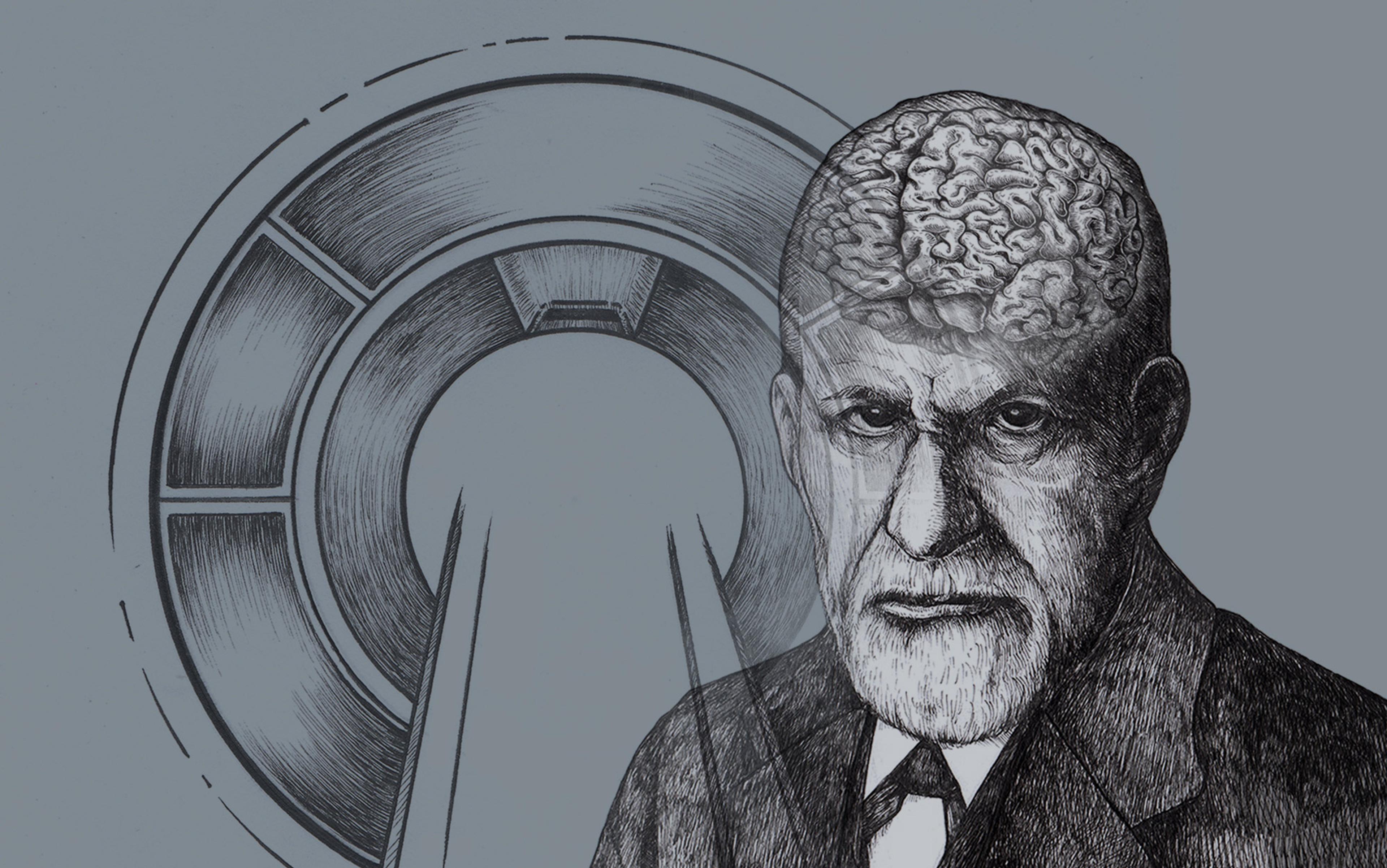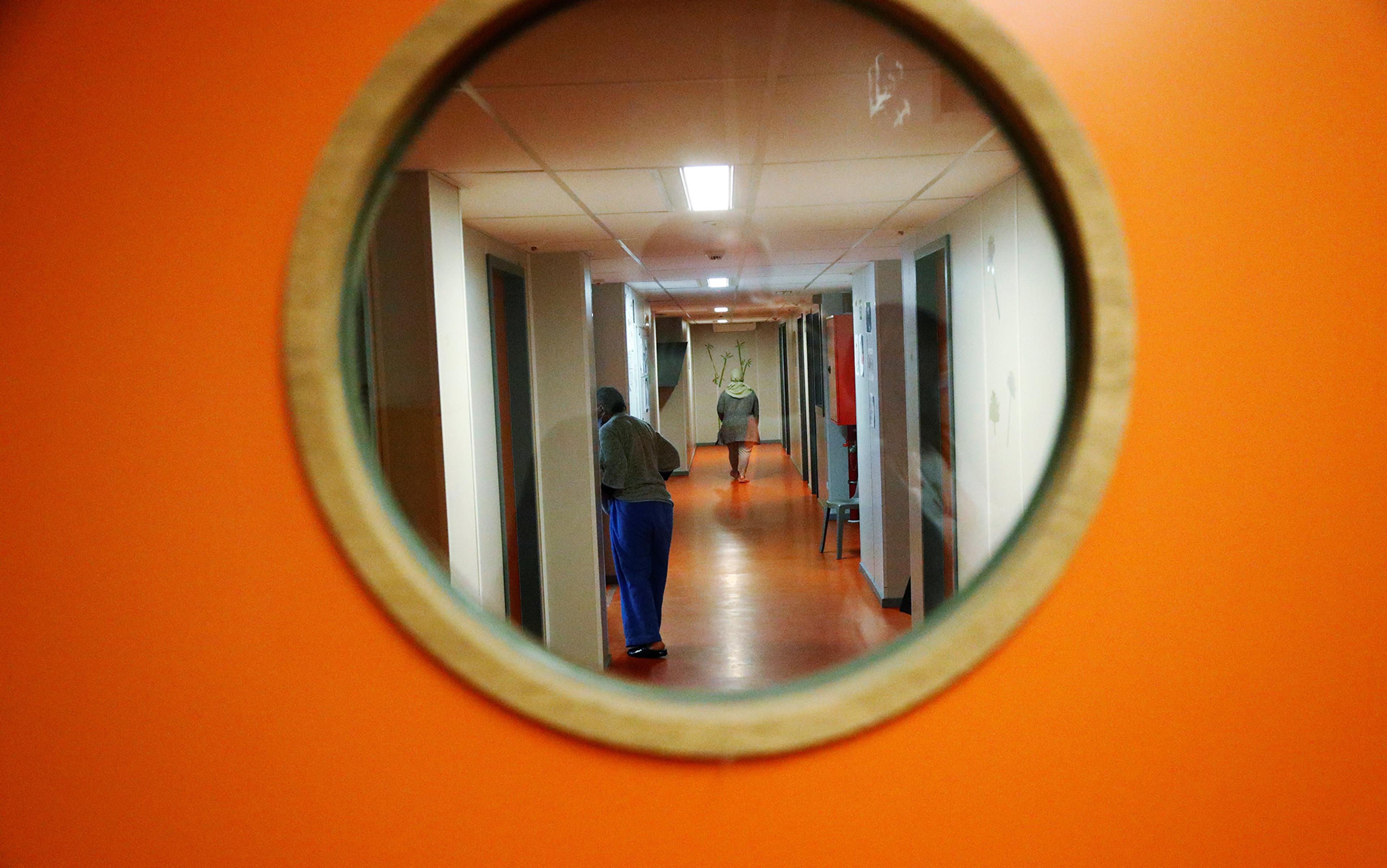It all began with a few drops of blood. Or, more precisely, a description of blood on the page. I was reading Lois Lowry’s childhood classic A Summer to Die (1977), about a girl who dies of leukaemia. The first sign that something’s wrong with Molly is a bloody nose that can’t be stopped. Whenever I got a bloody nose after that, I felt certain my own death was right around the corner. I’d check my arms and legs compulsively for errant bruises – another potential leukaemia symptom. I meditated on mortality more deeply before my teen years than some people do on their deathbeds. My obsession ran so deep, I had to throw away the offending book.
When, more than a decade later, a therapist told me I had obsessive-compulsive disorder (OCD), I could see with no trouble the red thread of obsession that ran through each stage of my life. At the time I was diagnosed, I fell at the extreme end of the broad human spectrum of obsessive traits, along with others who meet the criteria for OCD.
There’s no sugar-coating it: full-fledged OCD is pathological. It renders you unable to function, as I have experienced firsthand. But at the same time, obsessiveness suits our current cultural moment, and functional obsessives are often found perched at the top of social and vocational hierarchies. In Greek legend, Theseus, another obsessive overachiever, kills the Minotaur, then finds his way out of the labyrinth by following the red thread that Ariadne gave him. For better or worse, the thread of my obsession has guided my path even as it has ensnared me.
For me, obsession has always sprouted in the same substrate: the looming threat of death, whether physical, social or moral. Around the time that I was reading Lowry’s novel, I was also pulling my father’s Frank Netter anatomy books off the shelves, convinced I was destined for the rare conditions they illustrated in grisly detail. Then, drawn into the academic grind at a competitive high school, I channelled my fear of oblivion into obsessive studying. The nervous tension that gnawed at my insides made me miserable, but it also whipped me into a cramming frenzy before the AP Physics tests. Whenever my resolve flagged, I took a hit of fear to get it going again.
But while letting my fears steer me fuelled some of my high test scores, it also immobilised me at times. When you have OCD, each obsessive thought about a particular topic is followed by a corresponding compulsion – something you feel you have to do to banish the disturbing thought. Even after I threw out A Summer to Die, I was adept at turning minor health concerns into major crises, compulsively Googling medical websites to convince myself I didn’t have lymphoma or ovarian cancer.
When I became a working writer, I battled intrusive thoughts that appeared out of the ether: Remember that old article you wrote about fossilised dinosaur tracks? Better read it again and check every word, every sentence, to make sure you didn’t get something wrong or forget to cite a source. The refrain you did something wrong, you did something wrong came to dominate almost every obsession that blared through my brain. Every compulsion was a futile attempt to press the mute button.
When most people think of OCD, they picture someone who makes her bed with hospital corners or washes her hands ceaselessly to get rid of germs. But I never fit that profile – I’m a bit of a slob, in fact. Research reveals that the torturous intrusive thoughts that define OCD can manifest in a dizzying variety of ways. There are the constant hand-washers and the sidewalk crack-jumpers, yes, but there are also people like me for whom OCD looks a lot more like an existential crisis.
Some OCD sufferers have unwanted violent thoughts – that they will kill their friends or family members, for instance – and they perform compulsions such as getting rid of all their knives to make sure they won’t kill anyone (though they would never actually hurt a fly). Others with so-called ‘relationship OCD’ obsess that their partners are cheating on them, despite a lack of evidence, and check phones and whereabouts endlessly to verify their faithfulness. And people with the scrupulosity OCD subtype, struck with the thought that they’ve committed some moral wrong, compulsively pray or seek forgiveness to lift a burden of guilt that feels intolerable.
Only about1-3 per cent of the population obsesses to the extent necessary to qualify for an OCD diagnosis. But the human tendency to obsess is far more universal and has marked us for thousands of years. Had it not, it’s unlikely we’d be in our present position as a species.
What we know about the biology of obsession suggests that our brains are hard-wired to encourage it to some extent. Functional MRI scans show that people with OCD have unusual levels of activity in three key brain regions: the orbitofrontal cortex, the anterior cingulate gyrus and the basal ganglia. Critically, these regions of the brain are essential for what neuroscientists call error detection – identifying when something is wrong so that the thinker can make a course correction.
In people with OCD, this threat-detection system turns hyperactive, generating what the psychiatrist Jeffrey Schwartz at the University of California, Los Angeles (UCLA) has called ‘a persistent error-detection signal’. OCD, in other words, is like a tripped car alarm that won’t stop screeching even when you try to disarm it.
While no one likes the sound of a screeching car alarm, most of us are willing to install one if we’re afraid of getting robbed. Obsession could have arisen for a similar reason, evolutionarily speaking. ‘A driving anxious tension is the emotional core of obsessive character,’ writes the psychologist Steven Hertler at the College of New Rochelle in New York, and this tension, he explains, goads us to take the actions that are necessary to ensure survival. People who obsessed about potential threats – intruders, snakes, tigers – might not have been much fun to be around, but their Cassandra tendencies protected their friends and families, and improved the prospects of their offspring. ‘OCD,’ writes the German psychiatrist Martin Brüne, ‘can be understood as an extreme on a continuum of evolved harm-avoidance strategies.’
Our brains might also prime us to be most obsessive during vulnerable stages of our lives. Postpartum women, according to a study from Northwestern University in Chicago, experience OCD symptoms at a rate about four times that of the general population – persistent fears about hurting their newborn babies or exposing them to germs are common. The researchers think that this happens because some obsessiveness can be an adaptive response after birth, summoning the high-level vigilance that caring for a tiny, helpless being requires.
Our paean to the virtues of obsession has its roots in the Protestant work ethic
The survival advantages of a sensitive threat-detection system can explain why millions of us have ended up with threat detectors that are just a little over-tuned. While about one in 40 people have clinical OCD, about one in 10 experience obsessions and compulsions not quite severe enough to interfere with daily life.
While most of us have a hard-wired tendency to obsess, and some more than others, our current cultural milieu has encouraged and amplified that tendency. Our collective paean to the virtues of obsession has its roots in the Protestant work ethic, the concept of industriousness as a calling on the level of the sacred. ‘Such an attitude,’ wrote the German sociologist Max Weber in 1905, ‘is by no means a product of nature. It … can only be the product of a long and arduous process of education.’
Today, that process of education – the systematic way in which we reward and reinforce obsession – begins as early as primary school, when kids barely out of diapers can be rejected for not being academically ready. It persists throughout the school years, as teenagers compulsively assemble letter-perfect transcripts to capture the interest of brand-name colleges. And it continues well into adulthood as we cast our résumés onto the waters, scrambling for that indefinable something that will set us apart from the rest. In a system that prizes what Weber calls ‘economic survival of the fittest’, plum placements are scarce, differences between candidates are minute, and the economic implications of missing out are profound. No wonder our already-sensitive threat detectors are cranked up to orange alert.
What’s more, those who clear certain bars by virtue of obsession are handsomely rewarded. Hiring managers’ eyes alight on phrases that code for it in candidates’ recommendation letters – ‘detail-oriented’, ‘uncompromising’, ‘superlative work ethic’ – and many of these managers themselves ascended in the hierarchy thanks to a similar bent. Many professionals actually need to have obsessive concerns that ‘do not go overboard – making sure everything is done right’, says the psychologist Eda Gorbis, the director of the Westwood Institute for Anxiety Disorders in Los Angeles. Among those who have channelled obsessiveness into life-affirming purpose are crime-scene investigators who seize on minute evidence, astronomers who toil into the night to refine insights about the cosmos, and brain surgeons whose exacting cuts make the difference between life and death.
Many people with OCD, though by no means all, have likewise managed to channel their frantic mental machinations into concrete advantage. Lance Weiss, a New York City-based comedian with OCD, credits his obsessional nature with fuelling his rise in the world of stand-up comedy. When he ran a popular comedy show in the city, he prepared for each performance with an impeccable attention to detail. ‘Everything was so specific,’ he says. ‘I sat in every single chair to see how far someone’s knees would be to the next row.’ The English writer and counsellor Amanda Green, who also has OCD, says her all-or-nothing approach to life has powered her through setting up her own businesses and writing eight books. Screen legend Charlize Theron and John Green, best-selling author of The Fault in Our Stars, have also been open about their OCD diagnoses.
Case studies of OCD note these kinds of personal qualities, which can exist even in the presence of marked disability. ‘The characteristic diligence and conscientiousness of compulsives,’ wrote the American psychologists Theodore Millon and Roger Dale Davis, ‘reflect, in large measure, their control and exploitation of anxious energy.’
Anxious energy is a given for me – it’s hard to imagine what it’s like not to twang like a guitar string – and it makes sense that a certain level of obsessiveness might help humans to survive and thrive. But that doesn’t make it any easier when the obsessive side of my brain whirs into overdrive.
Like the mothers in the Northwestern study, I had an OCD resurgence after one of my sons was born. Though my history put me at high risk, and my postpartum hormonal crash made me more vulnerable still, I was oblivious – perhaps wilfully so – to all this, having gone symptom-free for a decent interval. But my obsessions soon resurfaced, enemy sub-style. I’d be lounging on my bed, nursing my son, and suddenly tension would grip my body and send my heartrate soaring. An article I’d written when I was 24, or maybe even a paper I’d written in high school, had tripped my threat detector with the force of a direct strike.
I’d lost the ability to see where perseverance curdled into pathology
To stop the carnage, I’d check and re-check the text of each piece, poring over it for any hint of a mistake or echo of another writer’s words. I also checked and re-checked quotes from sources, making sure that what was in my transcript matched up word-for-word with what appeared in my finished pieces. If I found any errors – and occasionally, I did, because facts and phrases are more slippery than people realise – it seemed like confirmation of my worst fears. When I did convince myself that an article passed muster, I’d calm down for a few minutes, but the tranquility was short-lived. An hour after I’d checked a stretch of text, I’d doubt that I had checked it thoroughly enough, so I’d have to go over it again, and the fiendish obsessional hamster wheel would make another turn. On the surface, it seemed to me as if I was doing my due diligence – but, in fact, I’d lost the ability to see where perseverance curdled into pathology.
There’s no doubt in my mind that obsessiveness is in my genes. I come from a long line of fastidious technicians, including a surgeon, a plumber and an engineer. If Schwartz were to scan my brain during an obsessive-compulsive episode, I’m almost certain that my orbitofrontal cortex would light up like a Christmas tree. But most mental disorder begins at the nexus of biology and environment, and it’s hard to imagine a setting more conducive to OCD than the culture I was raised in and inhabit still.
Groomed and encouraged in a dozen different ways to heed the insistent tugs of my obsession, I reached a point where it felt like – and probably had become – a biological imperative. When I got an OCD ‘spike’, as clinicians call it, not following my amped-up brain’s demands felt like ignoring a Godzilla breathing down my neck. ‘This disease, OCD, is an insatiable monster,’ Schwartz writes in Brain Lock (1996), his book about the condition. ‘The more you give in, the hungrier it gets.’
The first-line treatments for OCD are selective serotonin reuptake inhibitors, the class of drugs to which Prozac belongs, and a kind of hands-on therapy called exposure and response prevention (ERP). The latter involves bombarding yourself with the feared stimulus so ceaselessly that you adapt to it.
There are surprising parallels between ERP and spiritual practice the world over. Meditation is a means of surrender, accepting things just as they are in each moment. ERP, too, involves a distilled form of radical acceptance. If you are obsessively afraid of germs, and if you wash your hands several times an hour to banish them, you must accept your therapist’s instructions to rub your hands on the floor and lick them without washing them afterward. Or – in my case – you accept the possibility that you totally botched an old article and refrain from checking to make sure it passes muster. For people whose obsessions revolve around perfection, ‘it’s customary for us to suggest making tiny little mistakes – forgetting a comma, writing with a small letter rather than a capital letter,’ Gorbis says, and not following up with a correction. As your brain gets the message that life goes on as usual when you don’t carry out your compulsions, the magnitude of your OCD spikes diminishes.
For those stalwart enough to absorb the discomfort, ERP works astonishingly well. Confronting my worst fears directly, rather than trying to banish them with compulsions, has halted my worst obsessional cycles within days, sometimes even within hours. After patients got ERP-focused therapy in a UCLA study, brain areas that are usually hyperactive in people with OCD ‘cooled down’ on brain scans of those whose symptoms improved, suggesting that therapy can actually help to shift the brain’s biological circuitry. Those with OCD also have less activity in the orbitofrontal cortex after taking antidepressants such as Prozac, which might offer a different route to a similar biological result.
Still, for me and many others, treatment is a means of dialling down obsessional volume, not turning it off. In Brain Lock, Schwartz writes about several patients whose obsessions dropped considerably after therapy but continued to some degree. The goal of treatment, Gorbis stresses, is to limit troublesome symptoms and help people participate fully in life, not to banish an obsessive bent entirely. ‘You have to make a distinction,’ she says. ‘If the obsessive thoughts are causing significant distress and taking more than one hour [a day], then it is definitely an illness. If they’re occasional and don’t cause a significant level of distress, then it’s not an illness.’
While my symptoms have abated to a tolerable level, my obsessive nature has persisted, and I don’t think I would be the writer I am without it. My scrupulosity has helped me avoid some serious missteps, from factual errors to half-baked arguments. In a world of medieval consequences such as social-media shaming for wrongdoing, my endless fact-checking and self-questioning often feels like the only logical response. (I’ve witnessed the public lampooning of less exacting writers many times.) I’ve also thought, a little shamefacedly, that I need my obsessive bent because it balances out my equally strong lazy streak.
The paradox of OCD: taking self-protection too far engineers my own destruction
Schwartz teaches patients the rallying cry ‘It’s not me, it’s my OCD’ as an aid to mindfulness; it helps them remember that their symptoms are the product of a misfiring brain. For me, that particular device has been less helpful. My obsessions so closely resemble reasonable concerns about accuracy and integrity that it’s hard for me to view them as alien to who I am.
Yet I know that my obsessive tendencies are abnormal in degree, if not always in content, and I’ve had to moderate them at work because of what happens when I give them free rein. Once, after I told an editor that I needed to see yet another final proof of one of my stories – a proof I’d already looked over – he wrote back, exasperated, that no writer had ever asked for this many rounds of changes. I haven’t worked with him since.
Is it because I’m an obsessive that I did well at school, that I applied to writing internships relentlessly until I got one, that I’m willing to pitch editors over and over until a story idea lands? Well, yes – and my obsessive ancestors probably reaped the same kinds of rewards, as do many of my contemporaries with and without OCD. But I’m also determined not to succumb to the paradox at the heart of OCD: that taking self-protection too far means engineering my own destruction. To put it another way, I still hold on to the red thread, but I no longer allow it to yank me around. Awareness has been a mitigating factor: I realise, more than I did before, the extent to which my obsessive tendency echoes our culture’s blaring, interminable one. That allows me to consider how, and whether, I want to go along with its dictates.
Would I cut the red thread completely if I could? I’m not sure, but it’s a moot point: I can’t. So I have to trust that it will continue to guide me through the labyrinth.






